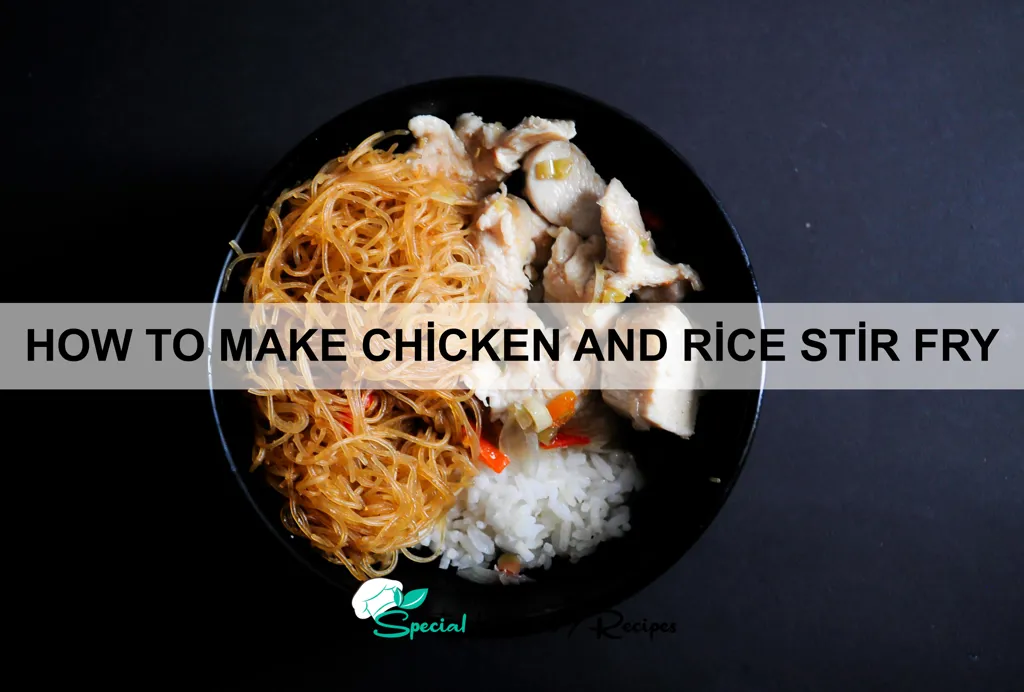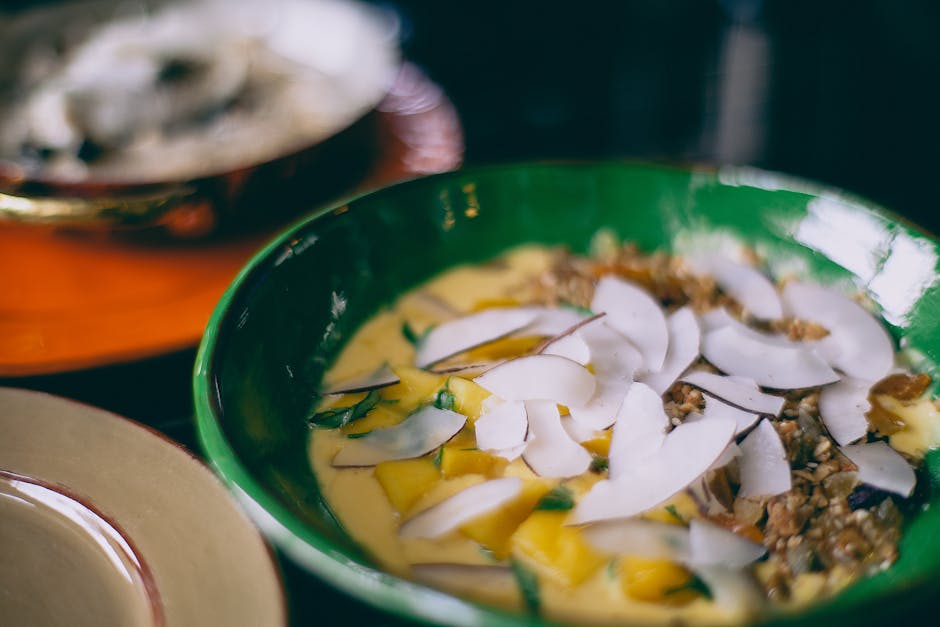Chicken and rice stir-fry, a seemingly simple dish, boasts a rich and fascinating history interwoven with the tapestry of global culinary traditions. While pinpointing a single origin is difficult, its core components – chicken, rice, and stir-frying techniques – trace back to distinct and ancient culinary practices. Rice cultivation, central to many Asian cultures, dates back thousands of years, with evidence suggesting its domestication in China as early as 7000 BCE. Similarly, chicken domestication occurred independently in various parts of the world, including Southeast Asia and the Near East, millennia ago. The stir-frying technique itself, characterized by quick cooking in a wok over high heat, is strongly associated with Chinese cuisine, although variations exist across East and Southeast Asian countries.
The specific combination of chicken and rice in a stir-fry, however, likely emerged much later, influenced by the global exchange of ingredients and techniques. The popularity of stir-fries exploded globally in the 20th century, driven by factors such as increased availability of ingredients, the rise of fast-casual dining, and the growing appeal of Asian-inspired cuisine in Western countries. Today, chicken and rice stir-fries are a staple in countless households worldwide, appearing in diverse forms adapted to local palates and available ingredients. Its versatility is reflected in the sheer number of variations – from the classic soy sauce-based stir-fries to those incorporating sweet chili sauce, curry powder, or a host of other spices and aromatics.
The cultural significance of chicken and rice stir-fry is multifaceted. In many cultures, chicken represents celebration and prosperity, while rice symbolizes abundance and nourishment. The dish’s quick preparation time often makes it a popular choice for busy weeknights, underscoring its adaptability to modern lifestyles. Furthermore, its affordability and accessibility contribute to its widespread appeal, making it a significant part of everyday meals for millions. Statistics show that chicken is one of the most consumed meats globally, and rice is a dietary staple for over half the world’s population, highlighting the fundamental importance of these ingredients in global food systems. The very simplicity of chicken and rice stir-fry, however, allows for endless culinary creativity, making it a culinary canvas for individual expression and cultural fusion.
Ingredients and Measurements
This recipe yields approximately 4 servings of delicious Chicken and Rice Stir-Fry. Accurate measurements are crucial for achieving the perfect balance of flavors and textures. We recommend using a kitchen scale for the most precise results, especially when measuring rice and chicken.
Chicken: 1 lb boneless, skinless chicken breasts, cut into 1-inch cubes. Choosing high-quality chicken is paramount for optimal flavor and tenderness. Look for fresh, firm chicken with a pale pink color. Avoid chicken with any discoloration or unpleasant odor. Cutting the chicken into uniform cubes ensures even cooking.
Rice: 1 ½ cups long-grain white rice. Using long-grain rice is recommended as it holds its shape well after cooking and doesn’t become mushy in the stir-fry. Rinse the rice under cold water until the water runs clear to remove excess starch. This will help prevent clumping and improve the texture of the cooked rice.
Vegetables: 1 red bell pepper, thinly sliced; 1 green bell pepper, thinly sliced; 1 medium onion, thinly sliced; 2 carrots, peeled and julienned. Feel free to substitute or add other vegetables you enjoy, such as broccoli florets, snap peas, or mushrooms. Ensure all vegetables are cut into similar sizes to ensure even cooking. Thinly slicing or julienning helps the vegetables cook quickly and evenly.
Sauce: ¼ cup soy sauce (low sodium preferred); 2 tablespoons oyster sauce (optional, but adds depth of flavor); 1 tablespoon rice wine vinegar; 1 tablespoon honey or brown sugar; 1 teaspoon sesame oil; ½ teaspoon ground ginger; ¼ teaspoon garlic powder; Pinch of red pepper flakes (optional, for a touch of heat). Whisk the sauce ingredients together in a small bowl before adding them to the stir-fry. This ensures a smooth, well-integrated flavor throughout the dish. Adjust the amount of honey or brown sugar to your preferred level of sweetness.
Oil: 2 tablespoons vegetable oil or canola oil. Use a high-heat oil with a neutral flavor to prevent the oil from overpowering the delicate flavors of the chicken and vegetables.
Garnish (Optional): Chopped green onions, sesame seeds. These add a fresh, vibrant touch to the finished dish.
Important Note: Adjust the quantities of ingredients to suit your needs and preferences. If you prefer a spicier stir-fry, add more red pepper flakes. If you have leftover cooked rice, you can use that instead of cooking fresh rice. Remember that proper preparation and precise measurements are key to a successful and delicious Chicken and Rice Stir-Fry.
Preparation of Chicken and Vegetables
Begin by preparing the chicken. We’ll be using 1 lb of boneless, skinless chicken breasts for this recipe. Ensure the chicken is thoroughly thawed before starting. Cut the chicken breasts into bite-sized pieces, approximately ½ inch cubes. This ensures even cooking and a pleasant texture in the final dish. Smaller pieces will cook faster, preventing overcooked, dry chicken.
Next, prepare your vegetables. For this stir-fry, we’ll use a vibrant mix of colors and textures. You’ll need 1 cup of broccoli florets, ½ cup sliced bell peppers (any color, or a mix!), and ½ cup sliced carrots. Wash all vegetables thoroughly under cold running water to remove any dirt or pesticides. Then, trim and cut the vegetables to consistent sizes. Aim for pieces that are roughly the same size as your chicken for uniform cooking.
For added flavor and texture, we’ll incorporate 1 small onion, thinly sliced. Onions add a subtle sweetness and depth to the stir-fry. Consider using a shallot for a more delicate flavor if preferred. Avoid over-slicing the onions as they can become mushy if cooked for too long. If using pre-cut vegetables, ensure they are fresh and of good quality. Avoid using vegetables that are wilted or discolored.
Once all the vegetables are prepped, set them aside in separate bowls. This helps maintain their freshness and prevents them from becoming soggy before cooking. Proper preparation is crucial for a successful stir-fry. Consistent sizing of ingredients ensures everything cooks evenly, resulting in a delicious and visually appealing dish. If you’re short on time, pre-cut vegetable mixes are available but always check their freshness before using.
Finally, consider a quick marinade for the chicken to enhance its flavor. A simple marinade of 1 tablespoon soy sauce, 1 teaspoon cornstarch, and ½ teaspoon sesame oil will do wonders. Toss the chicken in the marinade, ensuring each piece is evenly coated. Allow the chicken to marinate for at least 15 minutes, or longer for deeper flavor penetration. This step is optional but highly recommended for a more flavorful stir-fry.
Rice Preparation
Properly preparing the rice is crucial for a successful chicken and rice stir-fry. Undercooked rice will be crunchy and unpleasant, while overcooked rice will become mushy and ruin the texture of your dish. We’ll use the absorption method, which yields perfectly cooked rice every time.
Start with the right type of rice: For stir-fries, medium-grain white rice is ideal. It holds its shape well after cooking and absorbs the flavors of the stir-fry beautifully. Long-grain rice tends to be too dry, while short-grain rice can become too sticky.
Rinse the rice: Before cooking, rinse the rice thoroughly under cold running water. This removes excess starch, which can cause the rice to become sticky and gummy. Gently swirl the rice in your hands until the water runs clear. This step is essential for achieving fluffy, separated grains.
Measure the rice and water: A general guideline is a 1:2 ratio of rice to water. For example, for 1 cup of uncooked rice, use 2 cups of water. However, this can vary slightly depending on your stovetop and the type of rice. We recommend starting with 1 ½ cups of water for every cup of rice and adjusting according to your stove and preference. You can always add a little more water if needed during the cooking process.
Bring the water to a boil: In a medium saucepan, combine the rinsed rice and water. Bring the mixture to a rolling boil over high heat. Once boiling, immediately reduce the heat to the lowest setting, cover the pot tightly with a lid, and simmer for 15-18 minutes.
Rest the rice: Once the cooking time is complete, remove the pot from the heat and let the rice steam, covered, for another 5-10 minutes. This allows the rice to finish cooking evenly and absorb any remaining moisture. Do not lift the lid during this resting period.
Fluff the rice: After resting, gently fluff the rice with a fork to separate the grains. Avoid mashing the rice, as this will make it mushy. If the rice seems too wet, let it sit uncovered for a few more minutes to allow excess moisture to evaporate.
Important Note: The cooking time might need slight adjustments depending on your stove and the altitude. If you are cooking at a high altitude, you might need to add a little more water and increase the cooking time slightly. Always check the rice for doneness before removing it from the heat. It should be tender and fluffy, with no visible water remaining.
Stir-Fry Cooking Process
Once your chicken and vegetables are prepped (see previous sections for details), it’s time for the exciting part: the stir-fry! This process needs to be quick and efficient to ensure perfectly cooked, tender chicken and crisp-tender vegetables. High heat is key to achieving this.
Begin by heating 2 tablespoons of vegetable oil (or your preferred high-heat oil like canola or peanut) in a large wok or skillet over high heat. Ensure the wok is extremely hot before adding any ingredients; this prevents sticking and ensures a nice sear on the chicken.
Add the marinated chicken (approximately 1 lb, cut into bite-sized pieces) to the hot wok. Spread it out in a single layer to promote even cooking. Stir-fry for about 3-4 minutes, or until the chicken is browned on all sides. Do not overcrowd the wok; if necessary, work in batches to ensure proper browning.
Next, add your harder vegetables, such as carrots (1 cup, sliced) and broccoli florets (1 cup), to the wok. Stir-fry for another 2-3 minutes, allowing them to slightly soften. The order of adding vegetables is crucial; start with the ones that require longer cooking time.
Now, add the softer vegetables like bell peppers (1 cup, sliced) and snow peas (1 cup). Continue stir-frying for 1-2 minutes, until they are bright and tender-crisp. Avoid overcooking the vegetables, as this will make them mushy.
Finally, add your pre-cooked rice (2 cups, preferably day-old for better texture) to the wok. Gently toss everything together to combine the flavors and heat the rice through. Stir in 2 tablespoons of soy sauce (or to taste), 1 tablespoon of oyster sauce (optional, but adds depth of flavor), and a teaspoon of sesame oil for extra aroma. Taste and adjust seasoning as needed.
Remove the stir-fry from the heat and serve immediately. Garnish with chopped green onions (optional) for a fresh, vibrant touch. Serve hot to fully enjoy the flavors and textures.
Professional Tip: Use tongs or a spatula to constantly toss the ingredients in the wok, ensuring even cooking and preventing burning. A well-seasoned wok will help prevent sticking and enhance the overall stir-fry experience.
Sauce Preparation and Mixing
The sauce is crucial for a delicious chicken and rice stir-fry. A well-balanced sauce will complement the chicken and rice, creating a harmonious blend of flavors and textures. We’ll be making a savory, slightly sweet, and subtly tangy sauce for this recipe. Start by gathering your ingredients: 1/4 cup soy sauce (low sodium preferred), 2 tablespoons rice vinegar, 1 tablespoon honey or brown sugar, 1 tablespoon cornstarch, 1 teaspoon sesame oil, 1/2 teaspoon grated ginger, and 1/4 teaspoon red pepper flakes (optional, for a touch of heat).
In a small bowl, whisk together the soy sauce, rice vinegar, honey (or brown sugar), and sesame oil. Ensure you whisk thoroughly to completely dissolve the honey/sugar and create a smooth mixture. Lumps of sugar will affect the final sauce consistency.
In a separate small bowl, whisk the cornstarch with 1-2 tablespoons of cold water. This creates a slurry, which will thicken the sauce. Don’t skip this step; the cornstarch slurry is essential for achieving the desired consistency. Adding the cornstarch directly to the sauce without first making a slurry can result in lumps.
Gradually whisk the cornstarch slurry into the soy sauce mixture. Whisk continuously to prevent lumps from forming. The mixture should be smooth and slightly thicker than water.
Finally, stir in the grated ginger and red pepper flakes (if using). Taste the sauce and adjust the seasoning as needed. You might want to add a little more honey for sweetness, rice vinegar for tang, or soy sauce for saltiness, depending on your preference. Remember, taste is subjective, so adjust to your liking.
Professional Tip: Prepare the sauce in advance. This allows the flavors to meld together, resulting in a richer and more complex taste. You can prepare the sauce up to a day ahead of time and store it in the refrigerator. Bring it to room temperature before adding it to the stir-fry.
Important Note: The sauce will thicken further once added to the hot stir-fry. Therefore, it’s better to have a slightly thinner sauce at this stage than a thick one, to avoid an overly dense final product. Don’t be afraid to experiment with the quantities of ingredients to find your perfect balance of flavors.
Plating and Garnishing
Plating your chicken and rice stir-fry is as crucial as the cooking process itself. A visually appealing presentation elevates the dining experience and showcases your culinary skills. Begin by choosing the right serving dish. A wide, shallow bowl or a large plate works best to highlight the vibrant colors and textures of the stir-fry.
Start with the rice: Create a bed of fluffy, cooked rice in the center of your serving dish. Aim for approximately 1 ½ cups of cooked rice per serving. This provides a foundation for the rest of the ingredients and prevents the stir-fry from looking scattered.
Arranging the stir-fry: Carefully spoon the chicken and vegetable mixture over the rice bed. Avoid overcrowding the plate; leave some negative space for visual appeal. Consider arranging the ingredients artfully, perhaps creating a slight mound in the center or arranging them in a visually pleasing pattern. This step allows the individual components – chicken, vegetables, and sauce – to be easily distinguished.
Garnishing techniques: Garnishes add the final touch, enhancing both the visual appeal and the flavor profile. A sprinkle of freshly chopped green onions (approximately 1 tablespoon, finely chopped) adds a pop of color and a mild onion flavor. Similarly, a scattering of toasted sesame seeds (about ½ teaspoon) offers a nutty aroma and textural contrast. Consider using a few slivers of fresh ginger (about ½ teaspoon, thinly sliced) for a subtle spicy kick and visual interest. These garnishes are not just for show; they contribute to the overall sensory experience.
Professional recommendations: For a more sophisticated look, consider using a drizzle of your stir-fry sauce around the edge of the plate. This creates a visually appealing border and adds another layer of flavor. Avoid using excessive garnishes; less is often more. A few well-placed elements are far more effective than an overwhelming display. Remember, the goal is to complement the dish, not to distract from it.
Temperature matters: Serve your stir-fry immediately after plating to ensure the food is hot and the garnishes are fresh and vibrant. Avoid letting the dish sit for extended periods, as this can lead to the rice becoming soggy and the vegetables losing their crispness.
By following these simple steps, you can transform your chicken and rice stir-fry from a simple meal into a culinary masterpiece. Enjoy the process of plating and the satisfaction of creating a dish that’s as pleasing to the eye as it is to the palate.
Recommendations
For the best Chicken and Rice Stir-Fry experience, we recommend using fresh, high-quality ingredients. Pre-cut vegetables can save time, but chopping your own ensures optimal freshness and flavor. Don’t be afraid to experiment with different vegetables; broccoli, carrots, snow peas, and bell peppers all work wonderfully. To enhance the savory notes, consider adding a splash of soy sauce or a drizzle of sesame oil towards the end of cooking. Adjust the amount of seasonings to your personal preference; some prefer a more subtly flavored stir-fry, while others enjoy a bolder taste.
Serving suggestions are plentiful! This stir-fry is excellent on its own as a light and satisfying meal. However, it also pairs beautifully with a side of steamed white rice or quinoa for a heartier dish. For a more complete culinary experience, consider serving it alongside a simple side salad with a light vinaigrette dressing. A crispy spring roll or egg roll would provide a delightful textural contrast. The stir-fry’s versatility allows for numerous accompaniments to suit your taste.
Proper storage is key to maintaining freshness and quality. Allow the stir-fry to cool completely before storing it in an airtight container in the refrigerator. It will remain fresh for up to 3-4 days. You can also freeze the stir-fry for longer storage; it will keep for up to 2 months in the freezer. When reheating, use a microwave or stovetop, ensuring it’s heated thoroughly to a safe internal temperature.
Nutritional information will vary based on specific ingredients and portion sizes. However, a typical serving (approximately 1.5 cups) of this chicken and rice stir-fry may contain approximately 350-450 calories. The nutritional content will include a good source of protein from the chicken, carbohydrates from the rice, and various vitamins and minerals from the vegetables. For a more detailed nutritional breakdown, consult a nutrition calculator using your specific recipe ingredients and quantities.





